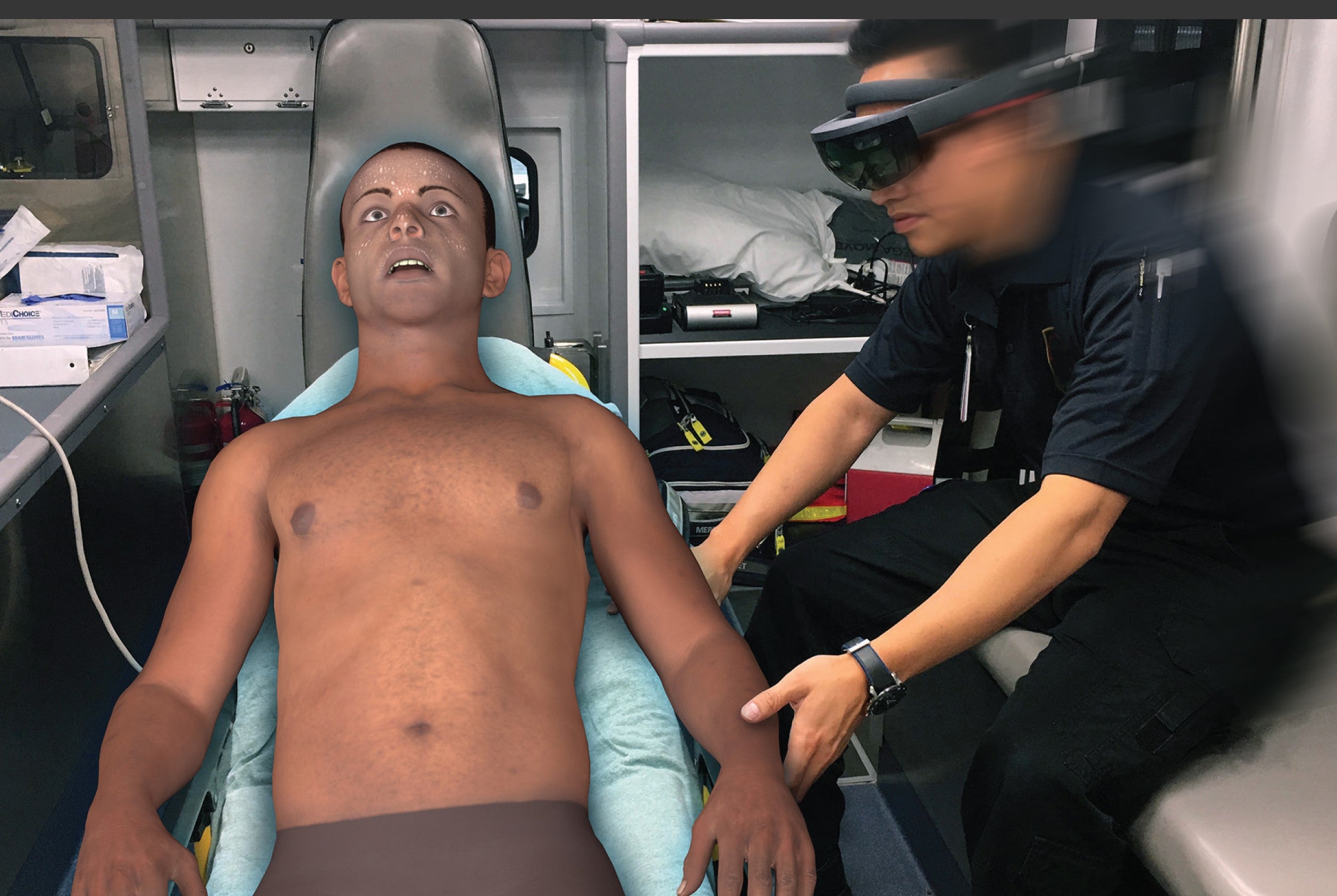
Using Microsoft’s Hololens augmented reality (AR) goggles, medical technology startup MedCognition is aiming to improve training for first responders and reduce associated costs in the process.
Emergency workers, such as paramedics, can wear the AR goggles to view PerSim, MedCognition’s holographic patient. This allows paramedics to train in situ and recreate the scene of an emergency, such as the back of an ambulance, instead of in a classroom.
Once a virtual patient is inserted into the setting through the goggles, it can simulate everything from sweating, seizures and other conditions to train diagnosis, to trauma-related injuries and mass casualty events.
While some companies have invested in virtual reality systems for first responder training, PerSim is one of the few training systems to use AR instead.
MedCognition cites medical error as a critical factor for providing its AR systems, taking examples from other sectors where simulation has been shown to decrease accident rates.
The company says its holographic technology can “eliminate the barriers to simulation training such as cost, realism and size” and that it can be projected into “nearly any environment”.
How well do you really know your competitors?
Access the most comprehensive Company Profiles on the market, powered by GlobalData. Save hours of research. Gain competitive edge.

Thank you!
Your download email will arrive shortly
Not ready to buy yet? Download a free sample
We are confident about the unique quality of our Company Profiles. However, we want you to make the most beneficial decision for your business, so we offer a free sample that you can download by submitting the below form
By GlobalData“PerSim helps train medical professionals on how to make better decisions,” states MedCognition’s press pack.
AR training: Dolls vs holograms
MedCognition Global Leadership Development Solutions Director Allan Frost told Verdict: “Traditional methods of simulation training largely centre on the use of mannequins. However, these mannequins are expensive, often costing over $100,000, not portable, weighing in at over 80 pounds, and not realistic — they look like dolls.”
Another bonus the AR system offers over mechanical dolls is that one system can be used to simulate patients of different ages and genders simultaneously. The AR projection can also be mapped onto a mechanical doll to allow for the best of both worlds.
Frost added: “PerSim uses state-of-the-art augmented reality, holographic technology that allows simulated patients to be used in nearly any environment at a fraction of the cost.
“PerSim patients look and move like real patients and can appear like they are in shock, having a seizure or stroke or bleeding to death from a traumatic injury.”
The simulated patient cannot be handled directly like a doll would be. However, first responders can use software to select treatments which will then affect the virtual patient.
While the system does not teach physical procedures, it teaches best practice and decision making in what can often be challenging scenarios.
Weighing in at 15kg, the portable system also allows for training sessions to be recorded or streamed in real-time, allowing for the decisions of paramedics to be scrutinised after training or as it is happening.
Frost added: “The entire system fits in a case about the size of a medium-sized suitcase. The portability of PerSim is crucial in allowing pre-hospital personnel to practice caring for patients in their actual work environment, rather than in some simulation laboratory.
“We believe this in situ training enhances the realism of the simulation and enhances educational outcomes.”
Read more: Mixed reality gets creative boost with purpose-built studio







